We use cookies to make your experience better. To comply with the new e-Privacy directive, we need to ask for your consent to set the cookies. Learn more.
How To Hang Pictures And Wall Art: The Definitive Guide
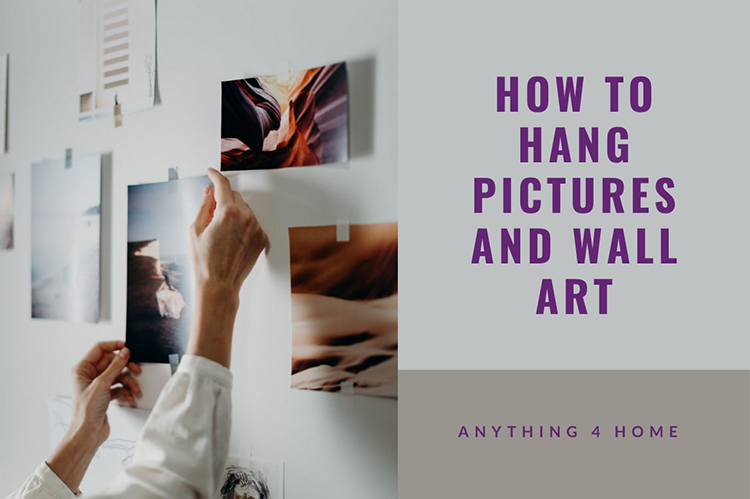
Painting or wallpapering is just the first step in making your house or apartment feel like home, and many of us don’t feel at home until we’ve put our photos, art, and ornaments that we love around the place. But if you have collected even a small number of pieces of art, then sometimes it can be difficult, and you might be left wondering how you can hang art so that it looks its best. If you’re new to choosing art, let alone hanging art, and you’re not even feeling certain where to begin, we’ve put this post together for you.
How To Choose Art
If you’ve never bought art before, then it can be really intimidating to get started, especially if you haven’t done any kind of art since school. But, as you’ll discover with our first point, it doesn’t have to be tricky – getting what you love is the most important thing.
First And Foremost: Fall In Love With It
Although many people buy art as an investment, being able to predict what will go up in value is really tricky, and so unless you have a fine art degree (in which case, you probably don’t need to be reading this post!) it is better to buy art according to what you love. That’s even more true if you are buying for a busy area of your home, and you intend to have it on display in a room, or hallway that means that you will see it every day. If you find a work of art that inspires you, makes you dream, or speaks to you in some other way – well, then that is likely to be the one for you.
Do Your Research Online: Buy In Person
Starting your search online is almost certainly going to be much easier, and can help you to narrow down the style, and the medium of art that you like. Although travelling to galleries and browsing is undoubtedly an enjoyable way to pass an afternoon, if you don’t know the general type of art that you’re looking for, there’s a good chance that you will end up walking away feeling confused, and even less sure of what you’re looking for. Refining the styles you are looking for, before you start your search, means that you can be more certain that the galleries you visit will have what you are looking for.
Once you’ve done your research, then it is time to shop. Visiting art galleries in person might feel a little intimidating, especially if you’re calling in on the off-chance to browse – which is why we’ve recommended doing your research first. By starting out visiting a gallery that you know has works that you can afford, and that you think you may find something you love, you’ll feel much less intimidated, and you can work up to strolling in and wandering around at your leisure.
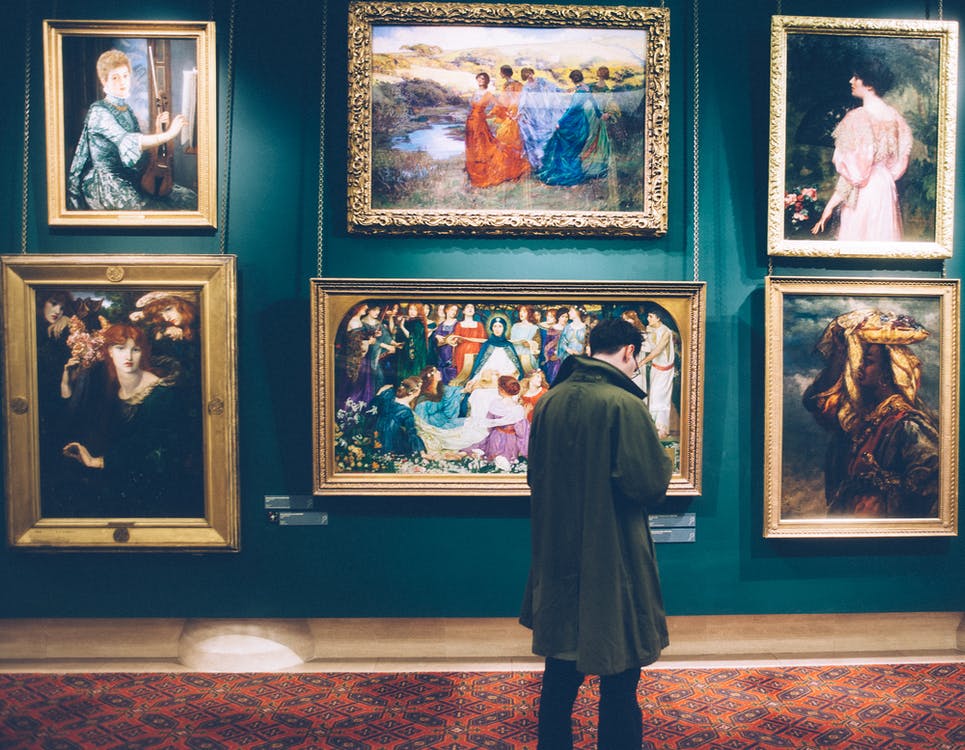
Carry Out Due Diligence: Avoid Forgeries
Especially if you’re going to be spending a significant amount of money on your piece, it is so important to ensure that the seller has the paperwork, proof and dating of the work. We’ve all heard the stories of art forgery, and that piece that is apparently a genuine David Hockney, but is selling for £300 – well, it is almost certainly not, as a quick search online will undoubtedly show you.
Choosing Each Piece: Buy For The Space
Of course, if you happen to see a piece of art that you love when you’re out and about, you might not be able to walk away without it – which is fine, but then when you get it home, you might feel stuck as to where you’re going to hang it. And if you’ve already got quite a collection, that might mean you don’t have a spot to hang it – and having to store a piece of art that you love, instead of being able to see it, and appreciate it, is really sad!
Because of this, buying art to suit the space makes much more sense. When you’re considering buying a piece, you will probably want to think about whether you want the painting to add drama to a space, to complement, or to provide contrast.
Also, think about the nature of how the room is used. Artwork for sitting rooms is likely to be very different in style to the art that you might choose for an adult bedroom, where more intimate, seductive, or passionate pieces may reign. In children’s bedrooms, inexpensive, playful prints may be the right option, since you’re likely to change the wall art as their personality evolves.
The size of the room is also going to have a huge impact on what artwork is right for you to buy as well. If you have a huge wall to fill, then buying a tiny sketch isn’t likely to be helpful – and vice versa. Large, dramatic paintings will dominate a small space, and you may end up feeling like you’ve made a mistake.
If your taste in art is eclectic and varied, it is pretty likely that you’ll love different pieces for completely different reasons. That’s fine – because assuming that your home has more than one room, you can buy different paintings and wall art for different rooms, based on décor palettes, the size of the room, and the function of the room.
Getting the lighting right for your artwork is important too. Sun light can be damaging, and so deciding where you’re going to place the piece, and it is important to have thought about how you’re likely to illuminate the piece before you buy. There are loads of wall lights, and spotlights that can be installed quickly, and will show your pride and joy off effectively during the hours of darkness. However, buy these after you have made your purchase, since you’ll need to buy lighting with the artwork in mind – if your picture has gold tones, a silver light fitting probably won’t have the right look.
Most Importantly: Don’t Compromise
You might find choosing art ends up being an ongoing process, and that you spend longer than you expect searching for the perfect piece (or pieces!) for your home. If this happens, don’t be tempted to compromise, and buy a painting that you only like, rather than love – you need to love it. You’re going to see it most days, and so you need to love it enough to want to see it every day.
If you’re buying art with a partner, things can get really complicated – especially if you have dramatically different tastes in styles. Compromise might be part of a relationship, but your choice of art shouldn’t be – and so, if your tastes are sufficiently different, then consider either dividing your budget, or deciding who will choose the art for each room in the home. If you both feel strongly, then a different approach may work better, but whatever you do, don’t choose a piece of art you both feel you ‘can live with’ – you’ll both just end up feeling disappointed.

How Much Should Art For My Home Cost?
While it is most definitely possible to spend thousands, and even millions on artwork, most of us don’t have that kind of cash to spend – and that’s absolutely fine, because choosing great art doesn’t necessarily need a big budget. If you have some money set aside in your budget, then graduate shows, new galleries and open studio events are a great place to start your search. Less famous artists in your local area often make their work available at events like craft fairs, and may have pop-up galleries from time to time – and their art is likely to have a much smaller price tag than renowned artists too.
If you absolutely love a famous piece, there is always the option of buying a print – you can have Munch’s The Scream, or van Gogh’s Starry Night on your wall for less than £50, if you so wish. Just search carefully, and check reviews if you’re buying online.
If your budget doesn’t stretch as far as that, then searching antique markets, charity shops and car boot sales can yield some fantastic finds. And remember, your opinion of a great painting is likely to be different to other people’s opinions, and so if you find a great picture for a fiver – well, nobody has to know how much it cost you, as long as you love it! Don’t forget, if you find a second hand piece where the art is wonderful but the frame is dated or doesn’t suit your style, you can always change the frame – and the cost of reframing is likely to still mean the overall cost of the piece is incredibly low.
Choosing Frames
There are some people that think that framing is an art in itself – and really, when you start to think about it, they’re right. There are quite literally thousands of options when it comes to choosing frames for your pictures and your art – and so you need to consider carefully which frame is the right one. The frames that you choose need to complement the style of the artwork, as well as the colour scheme of the room.
For prints and photos, use a frame in a colour that suits the colour of the piece – black and white photos look best with black, or white frames, while coloured pieces will look best with a frame that is within the same colour palette as the art.
If you’re framing drawings or illustrations that are made from perishable mediums, like pastel, pencil, or charcoal, or the work is done on paper, you’ll need to include a mount (also referred to as a ‘mat’). This will prevent the piece from rubbing against the glass of the frame, and protect it from mould, mildew, or other damage.
More traditional oil paintings often look best with a heavier, more ornate frame. Depending on their age, oil paintings need a completely different approach to framing, and some experts suggest that glass shouldn’t be used at all, due to the potential for the oil painting rotting if it is not sufficiently dry. Although an oil painting might be dry to the touch, works with thicker layers of paint are often not completely dry for decades – so it is always worth consulting with an expert when it comes to framing an oil painting.
When you’ve chosen a mixed media piece, you might need a completely different type of frame – box frames may, or may not be appropriate. If you’re in any doubt, check with the gallery, or the artist, or a specialist framer if you’re unsure.
If you’re thinking of displaying more than one piece together – perhaps in a gallery wall, which we’ll get to discussing in a moment – then there are several approaches to choosing frames.
- All matching frames, such as simple black, or white frames, in woods of the same weight, for a cohesive look
- Mismatched frames that are in the same colour scheme, such as gold, or a mix of black, white, and grey
- Completely mismatched frames for a less formal look
As we already mentioned, framing can be considered an art in and of itself, and as such, it is entirely up to you how you decide to frame the works.
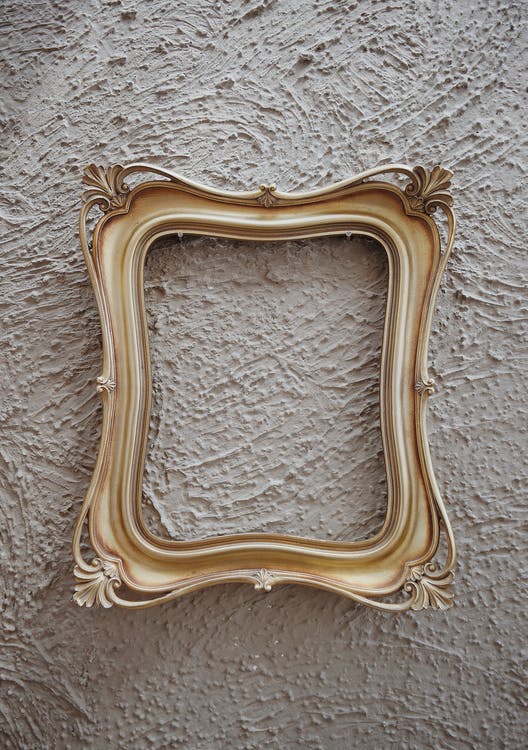
You Don’t Have To Frame Everything
If you want a really cohesive look for your art, then of course, go ahead and make sure everything is framed. But if you’re creating a more casual look, then don’t feel everything has to be framed – and definitely not in the same style of frame. Maybe you’ve collected vintage prints, postcards, or unfinished pieces from the local flea market – they can add the perfect amount of whimsy to your collection by leaving them unframed.
How To Hang Wall Art
You might have had the look that you want in your mind for a while, or the ideas you’ve got might have come to you recently – perhaps inspired by a social media post, or a collection you’ve seen. However long you’ve been planning the effect though, don’t start without preparing properly first.
Collect Your Supplies Together
Before you start hanging, be sure to have the tools you need on hand – it is so frustrating when you find you need something, and you don’t have it, especially if it means you need to pop to the hardware store, or to place an order for delivery the next day. Depending on the size and weight of your art or picture is, and what you’re hanging your artwork on, you may need:
- Hammer
- Measuring tape
- Pencil
- Picture hooks
- Stud finder
- Wall plugs
- Screws
- Screwdriver
- Wire
- Adhesive hooks
- Brick clamps
- Paper for testing layouts
This isn’t a comprehensive list – and you may want to have other items like Polyfilla and paint on hand, just in case something doesn’t go quite to plan!
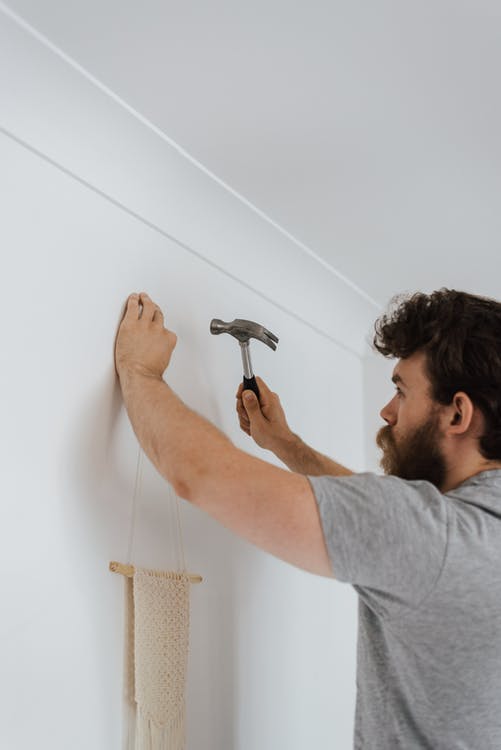
Decide On The Positioning
There are so many ways to display wall art. If you’ve chosen a single large piece, a pair of works, or a trio of pieces for your space, then getting the positioning right is likely to be a simpler process than if you’re planning to group a number of pieces together.
If you’re playing with more than one or two works – especially if you’re creating a mismatched gallery wall, check the layout will work by using paper before you pick up the hammer and nails. We’ll talk about gallery walls more in a moment.
However many pieces you’re considering hanging, here are some of the approaches that experts recommend.
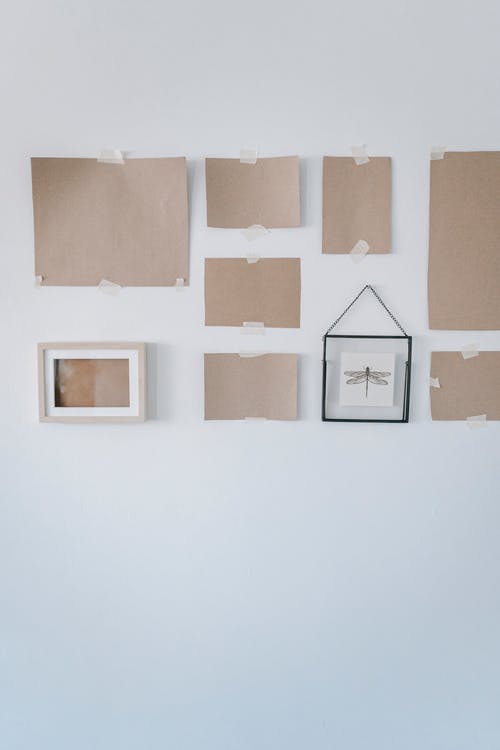
Symmetrical Layout
When you’re filling a large space and aren’t confident that you’ll be able to get a scattered look right, aim for symmetry. This collection of prints in a nursery could have been placed around the room for a completely different effect, but grouped together, the pieces act as one, and look perfectly placed in the space.
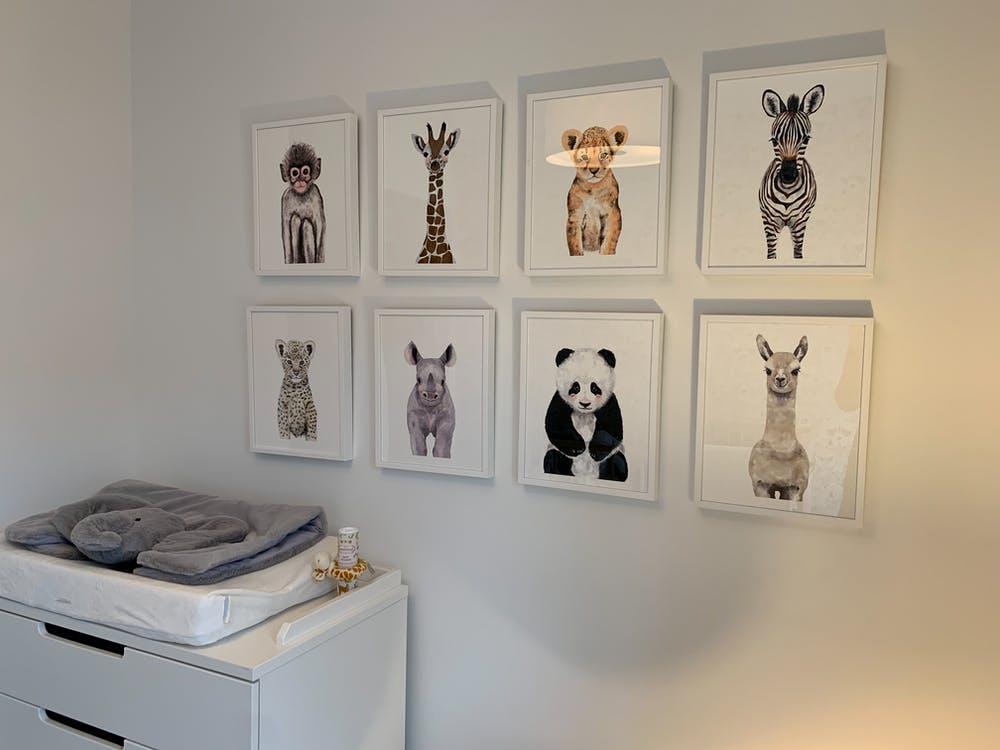
Create Visual Balance
If you’ve chosen a group of pictures and wall art that isn’t possible to create symmetry with, then the next best thing is to create balance. That might look like placing larger items in opposition to each other, so that the visual weight of the pieces feel right.
In this example, the larger frames are hung diagonally to each other, and are framed horizontally on a mat, with intentional blank space to make the works stand out. Because these two pieces balance, and the other two pieces have the same white and gold framing, it doesn’t matter that one of them is a vertical work rather than being horizontal.
Visual balance doesn’t necessarily have to come from your art – you might find that furniture, accessories such as lamps, vases or other decorative ornaments may be able to provide the counterbalance that your art needs.

A Simple Pair Or Trio
Finding the right pair, or trio of works can be just as hard as finding a single piece, but when you hit on the right ones, they can look wonderful together. Look for art that has similar subject matter, and choose matching frames to make the pieces work together.
In this example, the pieces are both related to nature, and the frames work with the other woods in the room. In addition to that, the terracotta, and the striped cushion are both in the same colour palette as the prints, tying the look together.
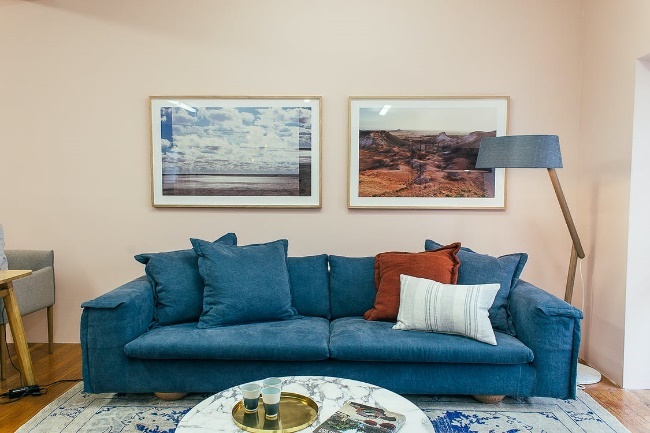
How High Should Art Hang?
There’s an often cited rule that a piece of art should always hang 57 inches (145 cm) from the ground in order to be able to match the average eye level. However, you’re likely to want the middle of the painting to be at that height – so you might need a little bit of maths to get it right. Experts advise taking the height of the frame, divide it by two, subtract the distance from the top of the frame to the hardware, then add 57.
If you’re hanging a painting above furniture, then the bottom edge – whether that is the frame, or the bottom of an unframed piece – should be about 8 inches (just over 20 cm).
These rules are good to follow, since it is really easy to hang paintings too high, which makes it look like the art is floating above where it ‘should’ be in the room. However, when it comes to art, innovation is key, and pretty much all the rules are there to be broken. That means that if you want to hang your wall art, or gallery wall from floor to ceiling, or all the way around the top of the room instead of at eye level, go for it!
Gallery Walls
If you’re working with more than one piece of art – as many people are – then you might be thinking about grouping several pieces together, in order for the work to have more impact. It is a great way to create a much bigger impact, and especially if you have a bigger space to fill.
There’s a huge social media trend for ‘gallery walls’ in the home – and if you have several pieces that would look great displayed together, or a large collection, this is almost certainly going to be a great way to display some, or all of it.
If you’re going to create a gallery wall, you still need to be intentional about it – and even more so if you want it to look as though it has been done in a careless, casual way. Having a theme is a good idea, as it means the collection will make sense. Your theme could be photos of family, paintings, and images of places you love, or you might choose art and pictures that all feature a particular colour palette.
When you have decided on your theme, then you’ll need to decide on frames. Choosing frames that are all the same colour – such as black, white, silver, gold, or the same shade of wood are popular – means that even if what is in the frames aren’t in any way similar, the collection will look curated, rather than odd.
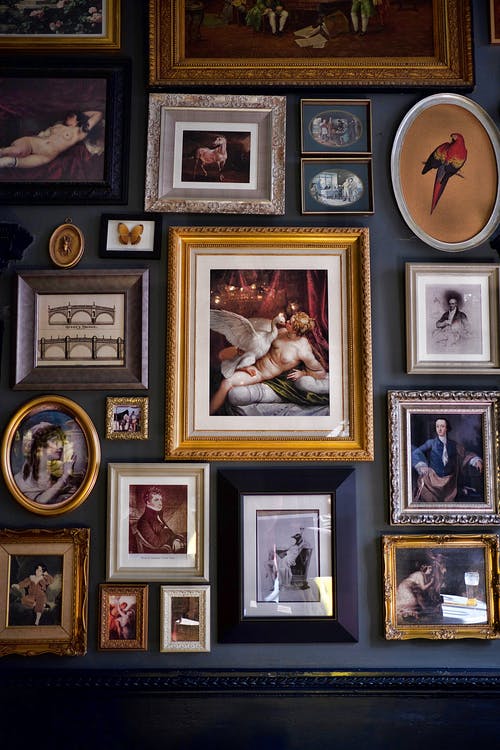

If that feels too curated for the space, then the alternative is to collect frames that are completely mismatched. There’s a skill to getting this right – and it can take a bit of time to get your collection right. After you’ve collected your artwork, photos, and pictures, and they’re all framed (or are ready for hanging, if they’re on canvas), you’ll need to experiment with the numbers and the layout.
There are so many ways to hang your gallery wall – from regimented lines, to having one larger piece at the centre and surrounding with smaller pieces, to a seemingly nonsensical layout – all layouts can work. Knowing which one is right for you will depend on factors like the style of décor and furniture in the room, your personal taste, as well as the items in your collection.
Because there are many ways to get it right, play with the layout before you even pick up your hammer. Setting the pictures out on the floor, and using paper and masking tape to mock up the layout will help you to ensure that you’re more likely to get it right, with fewer mistakes or problems.
Gallery walls don’t have to be exclusively pictures and artwork either. You can include:
- Artwork in different mediums, such as tapestries and macrame
- Sentimental items like framed clothing – first baby grows and items from wedding outfits are popular, and work if they’re part of the theme
- Decorative plates
- Taxidermy inspired pieces (you don’t have to go with actual taxidermy!)
- Hats – which make sense if your gallery wall theme is travel
- Mirrors
- Lighting – fairy lights can look incredible around gallery walls in children’s bedrooms and playrooms
The important thing to remember when hanging a gallery wall is that it isn’t an exact science – and it should be fun, and something that you love to come back to and admire. If you love the way something looks together, then go with it!
What Wall Surface Do You Have?
Be sure that you know the best way to nail or drill into the wall:
Drywall: Find a wall stud, and attach into that – drywall itself won’t be secure enough. If you can’t find a solid stud, then you’ll need to use a drywall anchor, unless your artwork is light and Command hanging strips will do the job.
Plaster: Can crumble, so be careful. Find a wall stud, and pop a bit of masking tape on the wall before you drill or put the nail in, to prevent crumbling.
Brick: You’ll need a wall anchor. When you’re drilling the hole, use a masonry bit, and drill into the mortar, rather than brick.
Which Hanging Hardware?
On the back of most picture frames, you’ll see multiple possibilities for hanging. These include D-rings (half loops), sawtooth hangers, and wire. There isn’t a correct answer, so choose whichever option you’re comfortable with.
Hanging A Picture With A Single Nail
For smaller, lighter frames (less than five pounds in weight) a single nail is likely to be the easiest way to hang your piece – and it comes with the least possible damage. Hammer into the wall, ideally into the stud so that the nail is pointing towards the ceiling. This will allow you to hang using the D-rings, or the sawtooth hanger.
Hanging A Picture With Wire
If your art is wider, and needs more stability, then using wire that is attached to the D-rings can work better. You can then hang from your nail as you would in the method above.
Things To Avoid When Hanging Art
There are a few things you need to know when you’re hanging your artwork – particularly if you’re displaying valuable works, whether that’s because they’re expensive, or because of their sentimental nature. With that in mind, avoid making these mistakes when you’re hanging your wall art.
Direct Sunlight
Of course, you’ll want to be able to see your artwork and pictures well, and that means great lighting is important – but sunlight can be catastrophic for your art. Direct sunlight carries ultraviolet radiation, which can lead to the image fading, cracks to appear, and for frames and canvases to warp. If your art is on paper, then it is even more important to keep it out of the sun, as paper is more delicate and susceptible to sun damage.
If you want to be able to display art in sunny spaces, then consider buying prints for the space instead – they will cost you much less, and are less likely to fade.
Inconsistent Temperatures
Keeping your art at a consistent temperature throughout the day is important to keep it looking great. Storing it in the loft in the summer months, or in a cold area like a basement or a conservatory in the winter isn’t ideal, since the temperatures can change dramatically throughout the day, causing damage like cracking.
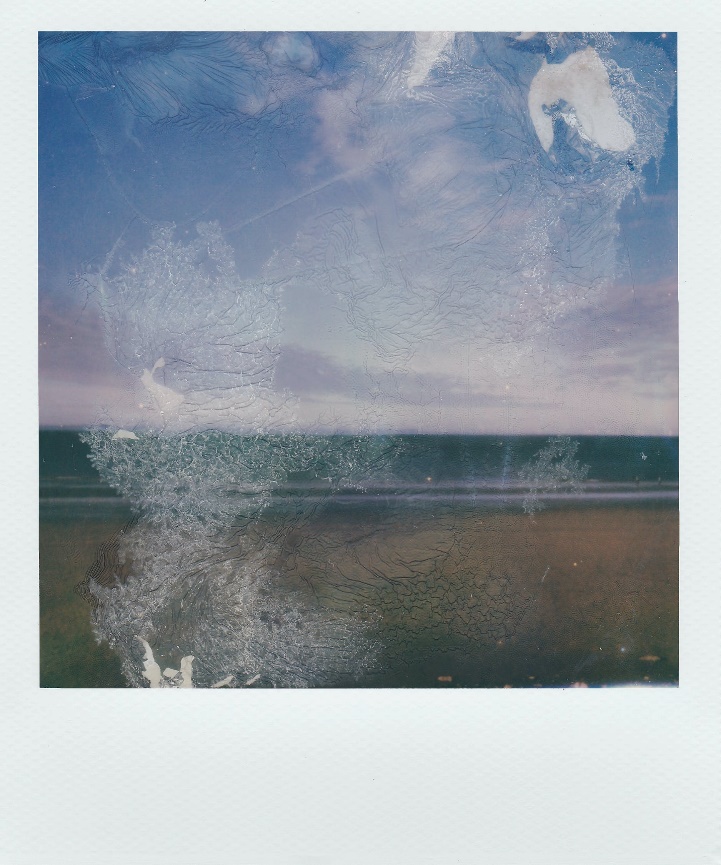
Dampness
In addition to the temperature, you’ll also want to consider the humidity of the room – which should be at around 20%. If you’re thinking of displaying your art in your kitchen, bathroom or space that is damp, be sure to consider this carefully. You don’t want to cause mould, or water damage to your beloved pieces.
Loose Fixtures
We’ve talked about how to hang pictures, and so hopefully, you won’t experience this – but you definitely don’t want your art to fall and be damaged. Hang your pictures securely, use a stud to anchor your art if possible, and use two points to hang larger pieces. If you’re in rented accommodation or you can’t nail into the wall, don’t be tempted to use temporary fixings like Command hooks, especially for heavy, or valuable pieces – lean your art instead.
Empty Spaces
This is definitely a matter of opinion, but having a tiny picture in the middle of a huge wall can look odd – and in most cases, would probably look better without. Larger artworks, or a collection of them, is likely to look much better, whatever your preferred style of art is.
Displaying Art Without Marking Your Walls
There are loads of reasons that you might not want to commit to putting the nail, or hook in in one place. Maybe you’re currently living in rented accommodation, and you’re not allowed to mark the walls, maybe you can’t decide what will look best, or you prefer to be able to rearrange regularly – and maybe you’re still collecting pieces for your gallery wall. Whatever your reason, that doesn’t mean you can’t see those pieces that you love regularly! Here are a few ways that you can display your art.
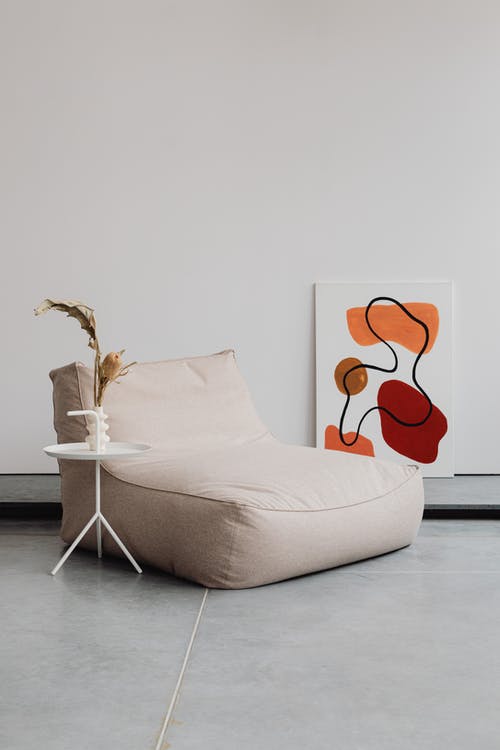
Lean It
This is probably the most lazy of ways to display your art, but it does allow for maximum flexibility if you change your mind! Simply leaning the frame on a shelf, or on top of a chest of drawers, or if it is a larger piece, on the floor against the wall is the easiest way to display your pieces – and when art is leaned this way, it can look much more casual. Great if you’re not sure of your favourite styles of art yet, if you haven’t decided which room is best for your piece or if you’ve just moved in.
Add Picture Shelves
If you love to switch things up regularly – especially if you have a great collection – then a picture shelf means you can easily change your favourites.
Consider Installing A Picture Rail
If you prefer a formal way of displaying your art, then installing a picture rail might be the right move. A picture rail is a thin strip of wood that is nailed towards the ceiling, and using hooks and wire, you can easily hang your pieces and arrange them in the same way you would if you were nailing them – but without needing to reach for your hammer.
Get A Professional To Do The Job
If all else fails – particularly if you have heavy, numerous, or valuable works of art, consider employing a professional to hang your wall art for you. They are trained specifically to help with hanging these types of walls, and they’ll be able to hang them securely, much more efficiently than those of us without training can.
Our Final Thoughts
What constitutes great art is incredibly subjective, and will always be a topic for debate – and how to hang pictures and wall art is just as much a matter of opinion too. This post has been a collection of guidance, rather than a rule book, and so if you have different ideas about how to lay out your artwork, or you have a different way to secure your art to the wall – well, give it a go! As long as your pictures and wall art are securely attached to the wall, and you love it, how you choose to display it really is up to you.